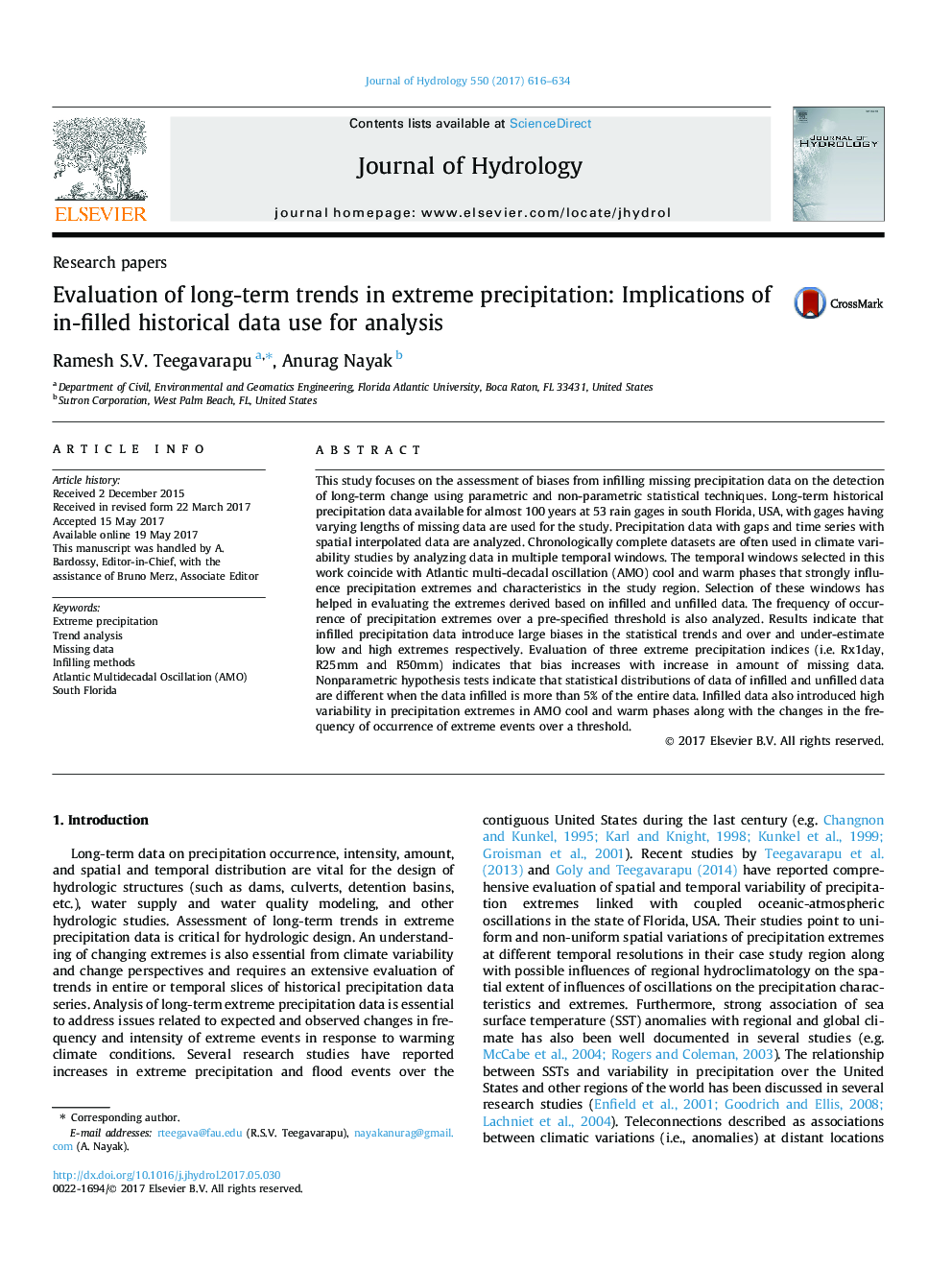| کد مقاله | کد نشریه | سال انتشار | مقاله انگلیسی | نسخه تمام متن |
|---|---|---|---|---|
| 5770781 | 1629904 | 2017 | 19 صفحه PDF | دانلود رایگان |
- Evaluation of impact of filled precipitation data on long-term trend analysis of extremes.
- Trend analysis using filled and unfilled precipitation data and confirmation of biases.
- Assessment using three WMO-based extreme precipitation indices.
- Changes to distributions of filled data and under estimation of extremes are evident.
- Variability of precipitation extremes in different phases of AMO with filled data.
This study focuses on the assessment of biases from infilling missing precipitation data on the detection of long-term change using parametric and non-parametric statistical techniques. Long-term historical precipitation data available for almost 100Â years at 53 rain gages in south Florida, USA, with gages having varying lengths of missing data are used for the study. Precipitation data with gaps and time series with spatial interpolated data are analyzed. Chronologically complete datasets are often used in climate variability studies by analyzing data in multiple temporal windows. The temporal windows selected in this work coincide with Atlantic multi-decadal oscillation (AMO) cool and warm phases that strongly influence precipitation extremes and characteristics in the study region. Selection of these windows has helped in evaluating the extremes derived based on infilled and unfilled data. The frequency of occurrence of precipitation extremes over a pre-specified threshold is also analyzed. Results indicate that infilled precipitation data introduce large biases in the statistical trends and over and under-estimate low and high extremes respectively. Evaluation of three extreme precipitation indices (i.e. Rx1day, R25mm and R50mm) indicates that bias increases with increase in amount of missing data. Nonparametric hypothesis tests indicate that statistical distributions of data of infilled and unfilled data are different when the data infilled is more than 5% of the entire data. Infilled data also introduced high variability in precipitation extremes in AMO cool and warm phases along with the changes in the frequency of occurrence of extreme events over a threshold.
Journal: Journal of Hydrology - Volume 550, July 2017, Pages 616-634
